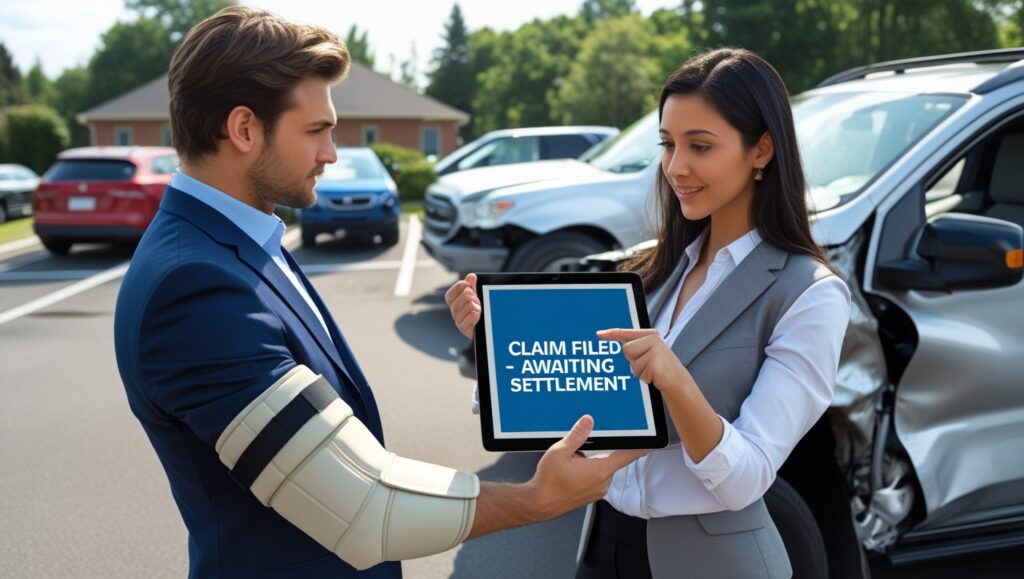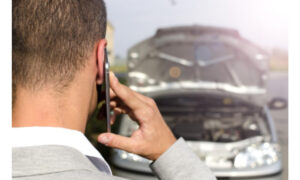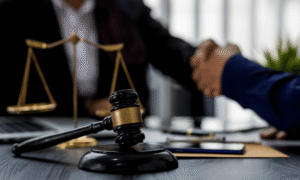
The Insurance Research Council found that accident victims who hired attorneys received settlements 3.5 times higher than those without legal representation.
How Liability Is Determined
Understanding who is at fault in a car accident is one of the most important steps in filing a successful personal injury claim. In legal terms, this process is called determining liability, and it’s critical in ensuring that injured parties receive fair compensation for medical expenses, lost wages, and other damages.
This article offers a detailed breakdown of how liability is established in car accident cases, from the initial investigation to courtroom arguments, with real-world examples, legal standards, and the roles of police, insurance companies, and attorneys.
The Core Concept
What Is Liability in Car Accident Cases?
Liability refers to legal responsibility. In car accident cases, the liable party is the individual, group, or entity whose negligence or misconduct caused the accident. Establishing liability means proving who was at fault and should therefore pay for resulting injuries and property damage.
- Liability is determined based on several key elements:
- Duty of care
- Every driver has a legal obligation to operate their vehicle safely.
- Breach of duty
- The at-fault party must have violated this responsibility.
- Causation
- Their behavior must have directly caused the collision.
- Damages
The accident must have resulted in quantifiable losses (physical, emotional, or financial).
In 2020, the Advocates reported that there were over 4.8 million medically consulted injuries from motor vehicle crashes in the U.S., with economic costs exceeding $474 billion. These figures underscore the vast impact of proper liability determinations on victims’ recoveries.
Step 1
Investigating the Scene of the Accident
The determination of liability starts at the accident scene. Important evidence includes:
Police reports
Officers document statements, cite violations, and sometimes assign fault.
Photos and videos
Visual evidence shows road conditions, skid marks, damage, and the positions of vehicles.
Witness statements
Third-party accounts often offer objective insight.
Vehicle damage analysis
Helps reconstruct the mechanics of the crash.
According to the National Highway Traffic Safety Administration (NHTSA), human error is a factor in 94% of serious motor vehicle crashes. This underscores the importance of documenting behavior, traffic signs, and road conditions.
In some states like Pennsylvania, drivers involved in a reportable crash must file an accident report within five days if a police officer does not respond. This can play a crucial role in preserving fault evidence.
Step 2
Insurance Company Review
Once the claim is submitted, the involved insurance companies launch their own investigations. Adjusters will:
- Interview both drivers and witnesses
- Review police reports
- Assess damage and medical records
- Look into traffic and surveillance footage
Insurance companies are known to assign comparative fault, a percentage of blame to each party, in an attempt to minimize payouts. This is why legal representation is vital. Your attorney ensures that negotiation is based on facts and that you’re not unfairly assigned blame.
Statistics from the Insurance Research Council show that claimants represented by attorneys receive payouts that are, on average, 3.5 times higher than those who settle without legal help.
Step 3
Legal Investigation by Attorneys
When liability is contested, a personal injury attorney will:
- Hire accident reconstruction experts
- Obtain black box data or vehicle diagnostics
- Subpoena phone records (to prove texting or distracted driving)
- Examine prior driving histories
In Pennsylvania and other comparative fault states, even if you are partially responsible, you can still recover compensation, as long as you’re less than 51% at fault. However, your award will be reduced by your percentage of fault.
For instance, if a court finds you 20% responsible for an accident and the total damages are $100,000, your award would be reduced to $80,000.
Types of Liability in Car Accidents
-
Clear-Cut Fault
Examples include
- Rear-end collisions (typically the trailing driver is liable)
- Left-turn crashes (the turning driver usually bears responsibility)
- DUI accidents (driver under the influence is presumed negligent)
- Shared Liability
- In some situations, both drivers share blame. For example:
- One car runs a red light while the other is speeding.
A car brakes suddenly without working tail lights, and the other driver rear-ends them.
This is where comparative negligence laws apply, and settlement depends on how fault is divided.
-
Vicarious Liability
Liability may also extend to
- Employers, if the driver was on the job
- Parents, in cases involving teen drivers
- Car owners, if they knowingly loaned a vehicle to an unfit driver
These extensions of liability help ensure that victims receive compensation even if the negligent driver lacks adequate coverage or resources.
Role of Evidence in Proving Fault
Solid evidence helps win car accident cases before they ever reach a courtroom. Important materials include:
- Dashcam footage
- Event data recorders (EDRs)
- Surveillance from nearby businesses
- Statements from medical providers
Additionally, apps and smartphones that track location and speed may also provide helpful data in litigation. Emergency responders’ reports and EMT assessments add further documentation on injuries sustained immediately following the incident.
Special Considerations in Car Accident Liability
Multi-Vehicle Pileups
In complex crashes involving multiple cars, chain reactions can make liability harder to assign. Courts or insurers will often use forensic data, expert reports, and witness accounts to determine how the sequence began.
According to AAA Foundation for Traffic Safety, multi-vehicle pileups are more common in adverse weather conditions, particularly fog, rain, or snow, further complicating the determination of fault.
Accidents with Commercial Vehicles
If a truck or delivery van is involved, the employer and vehicle owner may share liability. These cases often involve:
- Fatigue from over-scheduling
- Improper vehicle maintenance
Poor driver training
Data from the Federal Motor Carrier Safety Administration (FMCSA) shows that in large-truck crashes, driver-related factors such as speeding, inattention, or fatigue contributed to 87% of incidents.
How Fault Is Challenged or Disputed
Insurance companies often challenge fault to reduce payouts. Common defenses include:
- The injured party had a pre-existing condition
- The victim exaggerated the extent of injuries
- Weather or mechanical failure caused the accident
Your attorney prepares to counter these arguments with expert reports, consistent medical documentation, and police or witness statements. Detailed repair bills and accident reconstruction testimony can effectively rebut lowball offers or denial of liability.
Settlement or Trial
What Comes Next?
Once liability is established, most car accident cases end in settlement. According to the Bureau of Justice Statistics, only about 4% of tort cases go to trial.
Settlements often include compensation for:
- Emergency care and follow-up treatment
- Lost income and reduced future earning potential
- Pain and suffering
- Long-term disability or disfigurement
- When cases go to trial, the jury reviews:
- Facts from the accident
- Each party’s behavior
- Witness credibility
- Applicable traffic laws
If successful, the plaintiff receives a verdict that includes compensation for medical costs, lost income, pain and suffering, and other damages.
Know Your Rights, Protect Your Interests
Determining liability in a car accident is a fact-intensive process that requires timely action, credible evidence, and experienced legal support. If you or a loved one has been involved in a crash, contact a personal injury lawyer as soon as possible. Your legal team will gather documentation, deal with the insurance company, and guide you toward a resolution, whether through settlement, mediation, or court.
Understanding your role, your rights, and your options empowers you to pursue the compensation you deserve.






